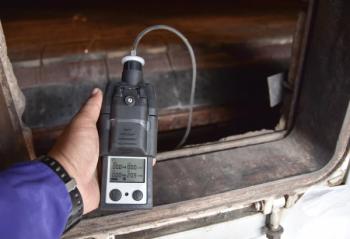
Spectroscopy and LCGC North America Sponsor Student Award at the 70th Los Angeles County Science & Engineering Fair
Spectroscopy and LCGC North America are proud to announce that Lydia Neguse of The California Academy of Mathematics and Science School in Carson, California, has been named the winner of the 2020 Most Outstanding Female in Chemistry or Chemical Analysis award at the Los Angeles County Science & Engineering Fair.
Spectroscopy and LCGC North America, which are multimedia platforms that promote the use of spectroscopic and chromatography instrumentation in applied research, environmental testing, quality control, and the life sciences, are proud to announce that Lydia Neguse of The California Academy of Mathematics and Science School in Carson, California, has been named the winner of the 2020 Most Outstanding Female in Chemistry or Chemical Analysis award at the Los Angeles County Science & Engineering Fair. Because of the coronavirus outbreak, the fair was held virtually this year.
The award was given for the most outstanding project in chemistry or chemical analysis at the fair by a female student in grades 9–12. Neguse’s project was entitled, “Characterization of Lattice Distortion in SrTiO3 Grown on LSAT Substrate through Quantitative STEM Analysis." In her winning project, Neguse worked to characterize the chemical compounds of STO and LSAT. STO is an acronym for strontium titanate, an oxide of strontium and titanium having the chemical formula SrTiO3. LSAT consists of the elements lanthanum, strontium, aluminum, and tantalum manufactured as a hard, optically transparent oxide with the chemical formula (LaAlO3)0.3(Sr2TaAlO6)0.7. In this project Neguse sought to determine if there is a significant and measurable difference for Ti distribution between STO-STO and STO-LSAT composite structures.
For her project, Neguse created STO-STO and STO-LSAT films using molecular beam epitaxy and then cut them to a workable size using a focused ion beam. Once these films were created she measured cross-sectional images of the films using high-angle annular dark field-scanning transmission electron microscopy (HAADF-STEM) procedures while operating the STEM system at 200 kV. From these images she constructed a map of vectors showing displacement of expected positions of Ti atoms. Based on this work, Neguse concluded that the Ti overall displacement, standard deviation of displacement, and preferential direction was greater for STO-LSAT than for STO-STO. Overall the project demonstrated an understanding of performing a complete characterization experiment on complex optical materials.
Neguse is a junior at the Academy and her project also received high marks in the chemistry category for all Grade 9 through 12 participants. Lydia gives credit for assistance in her winning project to her lab group, Stemmer Lab, and to the group's respective principal investigator, Susanne Stemmer-and to her mentor, Salva Salmani Rezaie.
Newsletter
Get essential updates on the latest spectroscopy technologies, regulatory standards, and best practices—subscribe today to Spectroscopy.





